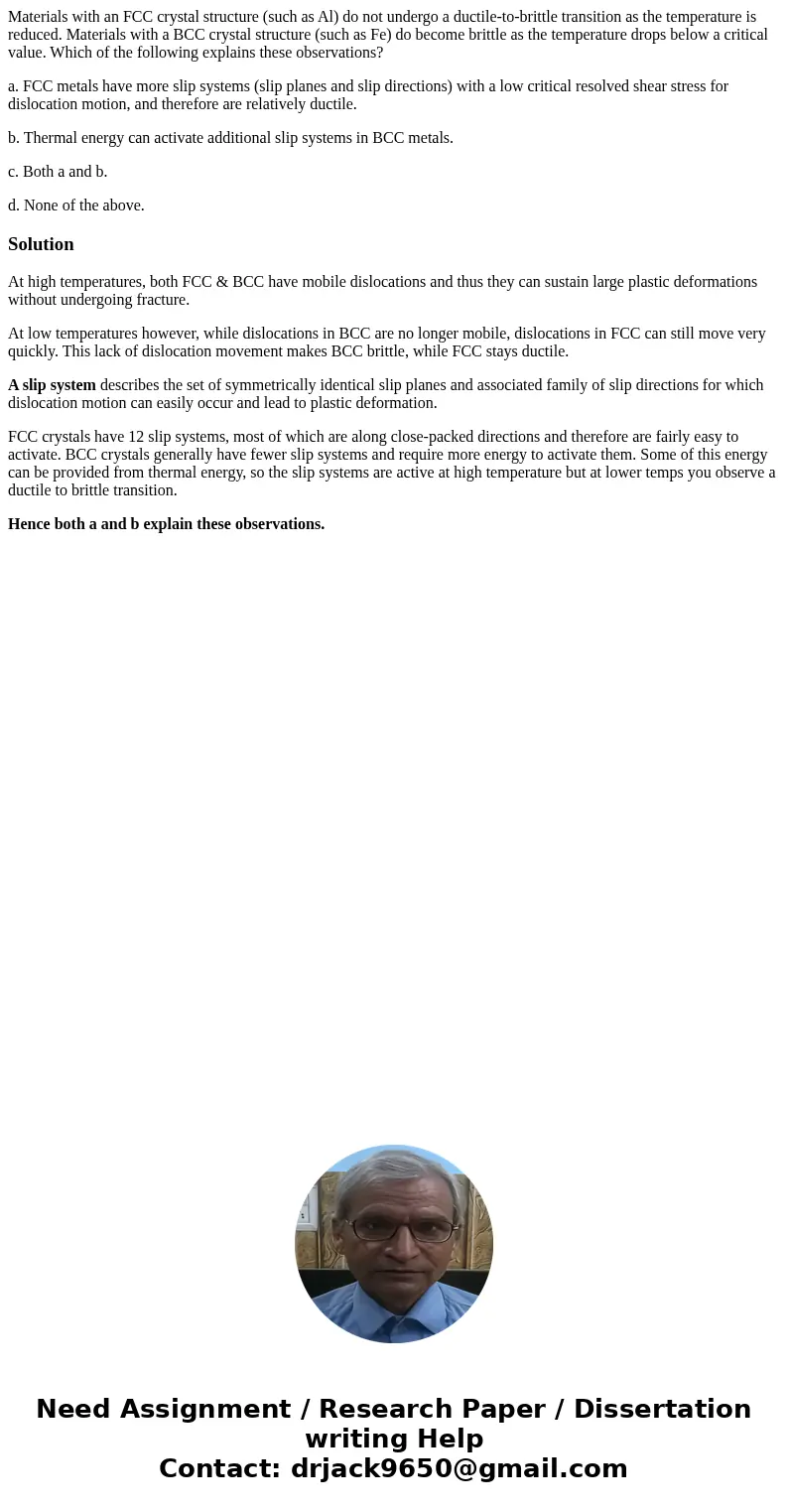Materials with an FCC crystal structure such as Al do not un
Materials with an FCC crystal structure (such as Al) do not undergo a ductile-to-brittle transition as the temperature is reduced. Materials with a BCC crystal structure (such as Fe) do become brittle as the temperature drops below a critical value. Which of the following explains these observations?
a. FCC metals have more slip systems (slip planes and slip directions) with a low critical resolved shear stress for dislocation motion, and therefore are relatively ductile.
b. Thermal energy can activate additional slip systems in BCC metals.
c. Both a and b.
d. None of the above.
Solution
At high temperatures, both FCC & BCC have mobile dislocations and thus they can sustain large plastic deformations without undergoing fracture.
At low temperatures however, while dislocations in BCC are no longer mobile, dislocations in FCC can still move very quickly. This lack of dislocation movement makes BCC brittle, while FCC stays ductile.
A slip system describes the set of symmetrically identical slip planes and associated family of slip directions for which dislocation motion can easily occur and lead to plastic deformation.
FCC crystals have 12 slip systems, most of which are along close-packed directions and therefore are fairly easy to activate. BCC crystals generally have fewer slip systems and require more energy to activate them. Some of this energy can be provided from thermal energy, so the slip systems are active at high temperature but at lower temps you observe a ductile to brittle transition.
Hence both a and b explain these observations.

 Homework Sourse
Homework Sourse